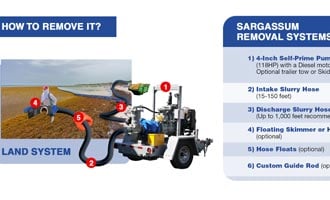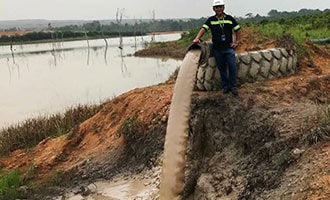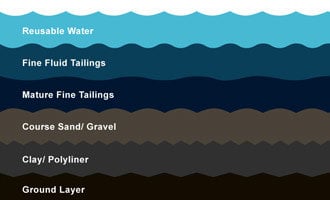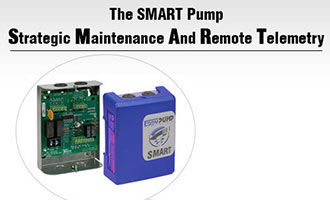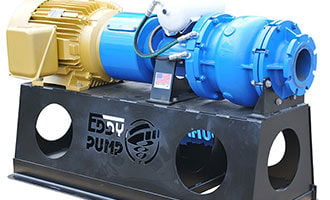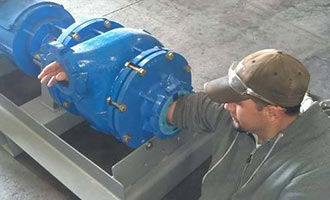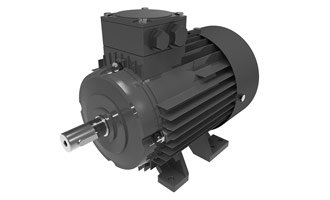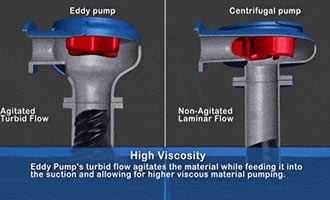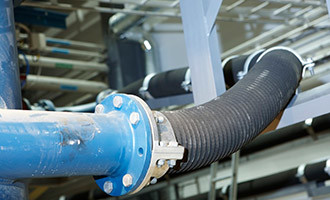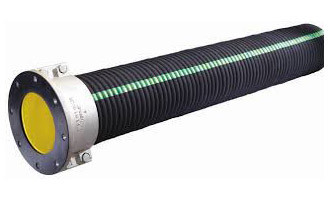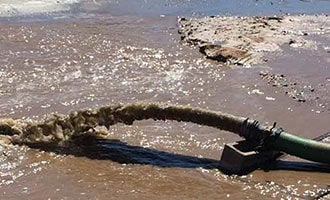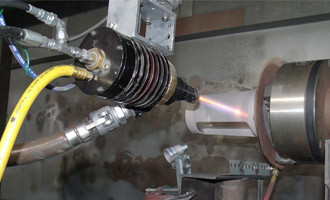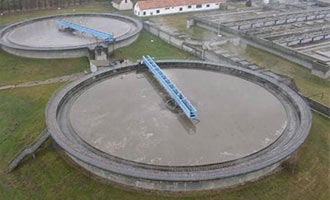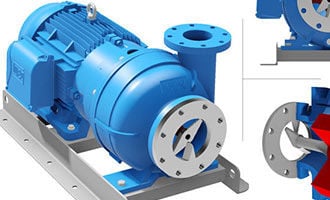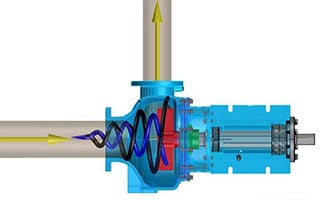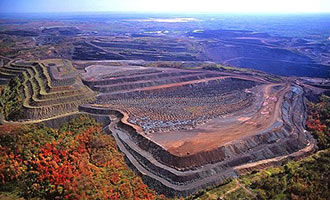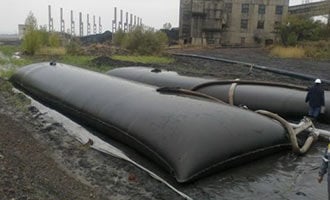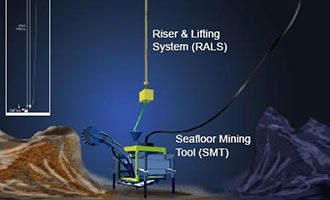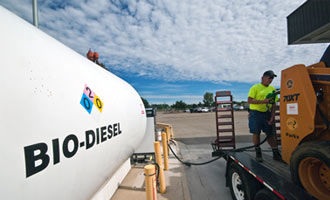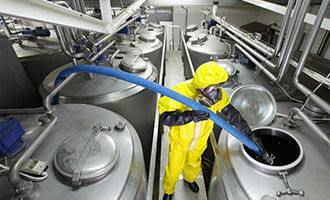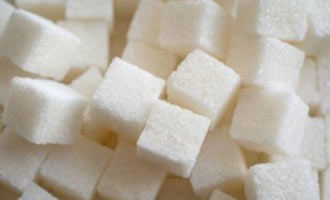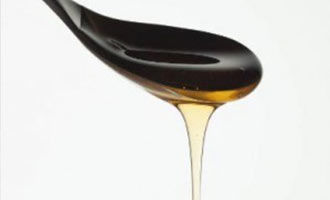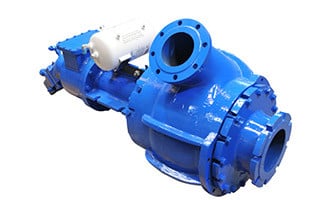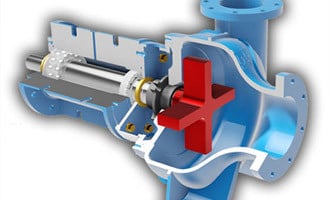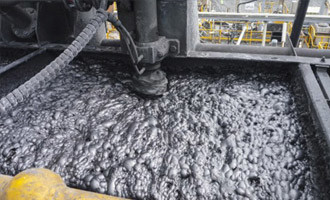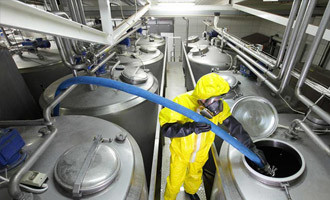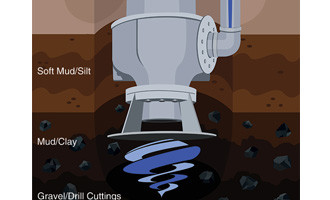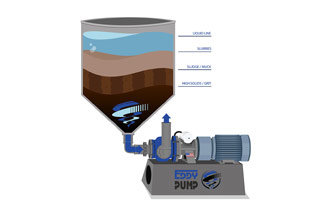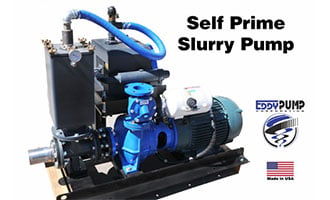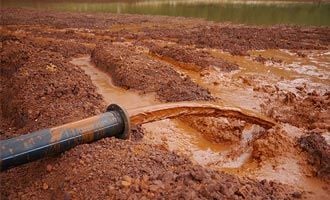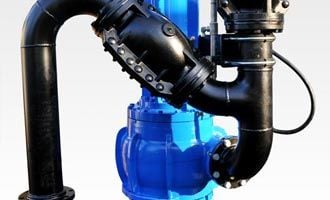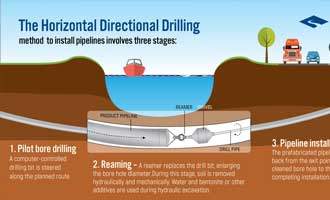The Cost of a Malfunctioning Slurry Pump
Fluid viscosity is an important property of fluids that cannot be overlooked. Learn what viscosity means for your pump selection.Types of Pump Malfunctions
Clogging – Pump clogs are a prolific problem in the pump world, especially with centrifugal pumps who offer a very low critical tolerance between the pump casing wall and the impeller, only allowing very small solids to pass safely. If these pumps encounter solids larger than what they had been designed for, the pump could easily clog, leading to loss of production and additional maintenance time to clear the clogs. With the EDDY Pump, clogs are a thing of the past thanks to our specially engineered non-clog pump design.
Cavitation – Pump cavitation will occur if there is insufficient NPSHa (Learn more about NPSH, click here). Cavitation causes damage and erosion of critical pump parts including the impeller, pump seals, and pump casing. If the problem is not addressed, it will quickly result in reduced pump performance, pump wear, and expensive replacement and maintenance procedures.
Discharge Recirculation – Describes an operating condition within a pump where large amounts of the design flow are not properly being pushed out of the discharge. This occurs when the pump’s operation is well below the recommended BEP. With lower than design flow exiting out of the discharge, large volumes of abrasive slurry are forced to recirculate within the casing causing damage, air pockets in the pump leading to cavitation, and wear to critical pump components.
Air Entrainment – Air entrainment concerns a multitude of conditions where the pump is pumping liquid that already contains air or gas. When this liquid hits the eye of the impeller, it can cause damage similar to cavitation. This problem is mostly caused by turbulence within the suction lines due to too many elbows in the line and pumping from an agitator tank or fluid mixer due to improper setup. The ideal situation is to provide the suction side with a straight run of pipe, in a length equivalent to five to 10 times the diameter of the pipe. This will ensure a uniform flow of slurry to the eye of the impeller and avoid most if any turbulence and air entrainment.
- Clogging – The EDDY Pump’s open rotor design promotes passage of large rocks, debris, rags, and other fibrous material that routinely clog other pumps
- High Viscosity – EDDY Pump’s turbid flow agitates the material while feeding the pump, allowing for higher viscous material pumping.
- High Solids – EDDY Pump’s hydrodynamic principals allow for the transportation of a higher concentration of solids with less free water.
- High Specific Gravity – EDDY Pump’s strong eddy currents readily draw heavy materials up into the pump and convey them out of the discharge without wearing down the pump.
- Highly Corrosive Material – EDDY Pump’s performance does not rely on critical tolerances which allow for highly corrosive and abrasive slurry pumping with little to no performance loss or increased maintenance.
Reducing the Cost of Pump Operation
A large percentage pertaining to the cost of running pumps is the cost of power consumption. It is no secret that running heavy-duty pumps requires significant power which should be optimized for the pump and the particular job the pump is performing. One of the main ways to reduce the operating costs of your pumps is to make sure the pump is correctly sized and powered for the desired flow rate of your material, total feet of dynamic head, and total pumping distance. Many times, pump operators will use larger or other wrongly-sized pumps than what’s actually required. This can quickly cause the electric bills to skyrocket because the pump is being used inefficiently by running on far more power than it needs to. While on the other hand, a smaller pump with a smaller motor could potentially achieve close to similar results at a fraction of the total power cost.
With the addition of a VFD (Variable Frequency Drive), you could save even more money by controlling the RPM and horsepower of the pump depending on the needs of the job. This ensures that the system does not consume too much power when not deemed necessary. The simple addition to a VFD to your pump operation has the potential to save your company thousands of dollars per year in energy costs alone. Using a VFD system for your pumps can save your operating costs thousands of dollars per year alone, quickly giving you a solid ROI.
Reducing Pump Maintenance and Repair Costs
Reducing the maintenance costs of your slurry pumps involves using highly abrasive resistance parts and components that make up the interior of the pump, or in other words, the parts of the pump that will come in direct contact with the abrasive or corrosive material. Some metals do not perform well at all when confronted with a heavily abrasive or corrosive material, wearing down components in a matter of hours in some cases, resulting in heavy repair expenses.
Top ways to reduce operating costs of your pump:
- Running your pump more efficiently, close to its Best Efficiency Point (BEP), will result in energy savings.
- An efficiently running pump reduces the power consumption added to the system, which will help prevent the generation of excess heat and vibration, overall reducing maintenance costs for the operation.
- With pumps running more efficiently, they can be run at longer intervals, increasing production and revenue for your company.
How The EDDY Pump Avoids These Problems and Saves Big on Maintenance Costs
Using an EDDY Pump will allow you to pump corrosive and/or abrasive slurries while minimizing erosion and other types of damage to pump components. This is achieved through the EDDY Pump’s highly recessed rotor, specially engineered to come into minimal contact with the abrasive particles found in the slurry. Additionally, the EDDY Pump lacks any critical tolerances which could lead to clogs in traditional centrifugal pumps as larger solids getting stuck between the pump casing and the impeller is a common occurrence. This is a common problem when using centrifugal pumps for slurries, and one of the reasons the EDDY Pump is the most efficient and desired pump when it comes to slurry pumping. Our highly engineered technology at EDDY pump has a very high tolerance for material size, with a capacity to handle solids with sizes as large as 9 inches depending on the size of the pump.
The open rotor design of the EDDY Pump allows anything which can go through the suction to go through the discharge without any issue. At EDDY Pump we are committed to providing best-in-class slurry and dredge pumps to our customers. As a result, each component is thoroughly tested to deliver supreme quality, reliability, and versatility. Our unique technology provides us with an extraordinary capability to easily handle materials with enormous volumes and high specific gravity in tough conditions.
Over a 4-year test, EDDY Pump saved the US Navy nearly 18 million dollars in maintenance and repair costs compared to the competition. Just imagine the money saved in 20 years! (Download PDF below)
Conclusion – Optimizing Your Slurry Pump Performance
If your pumps have been frequently breaking down or otherwise requiring more maintenance than expected, it may be time to deeply analyze your entire production system to look for inefficiencies. Without analyzing the numbers and running the data, operators are left in the dark as to how efficient their pumps are performing. However, armed with the right data, engineers can optimize the entire system to reduce operating costs and drastically lower maintenance coupled with increased production and company revenue.
The EDDY Pump can be applied to many different industrial applications and flawlessly handle high solids, high viscosity, abrasive, and corrosive materials. Depending on your project needs, The EDDY Pump can be efficiently deployed to suit your slurry pump application. Contact us today to see how you can save massive amounts of money on repair and maintenance by using the EDDY Pump for your heavy-duty pumping jobs.
Order or Get Selection Help
Let our sales or engineering support help in your slurry pump and dredge equipment selection. Call (619) 258-7020
Related Products
HD (Heavy Duty) Slurry Pumps
Why EDDY Pumps Are Better – Highlights
This video shows how EDDY Pump outperforms centrifugal pumps when pumping high solids abrasive, viscous or corrosive slurries.
Why EDDY Pumps Are Better - Highlights
This video shows how EDDY Pump transports high slurry and abrasive materials. Featured dredge pump equipment includes the Remote Operated Subdredge, Diver Operated Pump and a Excavator Attachment Dredge Pump.




